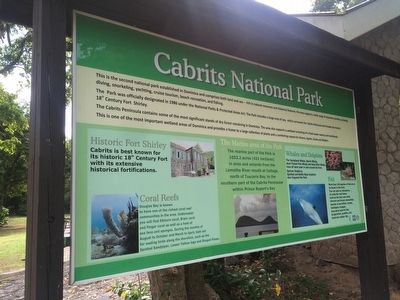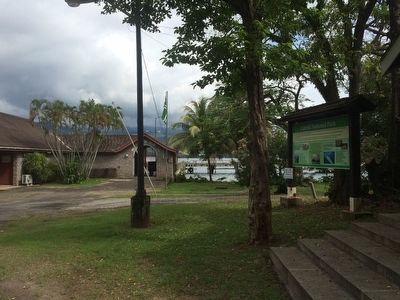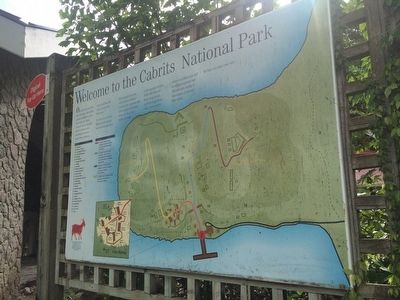Chance, Saint John, Dominica — Caribbean Region of the Americas (Lesser Antilles of the West Indies)
Cabrits National Park
This is the second national park established in Dominica and comprises both land and sea - rich in natural resources and historical features, the area supports a wide range of important activities, including diving, snorkeling, yachting, cruise tourism, beach recreation, and fishing.
The Park was officially designated in 1986 under the National Parks & Protected Areas Act. The Park includes a large area of sea, which surrounds the Cabrits Peninsula and includes the historic 18th Century Fort Shirley.
The Cabrits Peninsula contains some of the most significant stands of dry forest remaining in Dominica. The area also supports a wetland consisting of a fresh water swamp and marshlands.
This is one of the most important wetland areas of Dominica and provides a home to a large collection of plants and a comforting repose for Herons, Egrets, Ducks and Waders.
Historic Fort Shirley
Cabrits is best known for its historic 18th Century Fort with its extensive historical fortifications.
The Marine area of the Park
The marine part of the Park is 1053.2 acres (421 hectares) in area and extends from the Lamothe River mouth at Cottage, north of Toucarie Bay, to the southern part of the Cabrits Peninsular within Prince Rupert's Bay
Whales and Dolphins
The Humpback Whale, Sperm Whale, short finned Pilot Whale and false Killer Whale, have all been seen in and around the Park.
Spinner Dolphins, Spotted and Bottle Nose Dolphins also frequent the Park.
Fish
More than 100 species of fish are to be found in the Park. You can spot an abundance of colourful reef fishes such as the blue and white chromis and bicolor damselfish, species of parrotfish, wrasse, mahogany snapper, long spine squirrel fish, Surgeonfish, goatfish, and black-bar soldier fish.
Coral Reefs
Douglas Bay is known to have one of the richest coral reef communities in the area. Underwater you will find Elkhorn coral, Brain coral and Finger coral as well as a host of sea fans and sponges. During the months of August to October and March to April, look out for wading birds along the shoreline, such as Spotted Sandpiper, Lesser Yellow legs and Ringed Plover.
Topics. This historical marker is listed in these topic lists: Colonial Era • Environment. A significant historical year for this entry is 1986.
Location. 15° 34.97′ N, 61° 28.321′ W. Marker is in Chance, Saint John. Marker can be reached from Bay Street. The marker is near the entrance to Cabrits National Park. Touch for map. Touch for directions.
Other nearby markers. At least 8 other markers are within walking distance of this marker. Prince Rupert's Garrison (about 150 meters away, measured in a direct line); Fort Shirley (about 150 meters away); The Trees Return (about 150 meters away); Cabrits Calendar of Events (about 150 meters away); Guard House, Powder Magazine (about 150 meters away); Officers' Quarters (about 180 meters away); Upper Battery, Signal Station (about 180 meters away); Water Catchment, Troops' Kitchen, Stables (about 180 meters away). Touch for a list and map of all markers in Chance.
Credits. This page was last revised on June 16, 2019. It was originally submitted on May 4, 2016, by J. Makali Bruton of Accra, Ghana. This page has been viewed 355 times since then and 25 times this year. Photos: 1, 2, 3. submitted on May 4, 2016, by J. Makali Bruton of Accra, Ghana.


